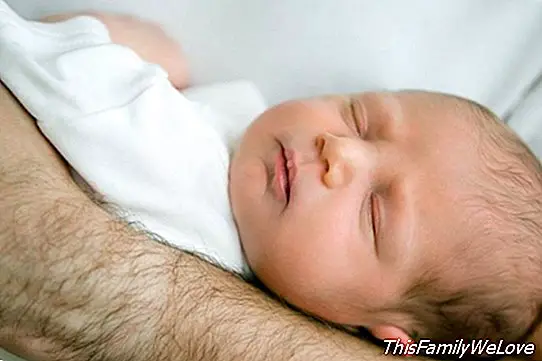Craniosacral therapy in babies, what it is and when it should be applied
Being a father means facing a multitude of terms that seem to be explained in other languages. There are many things that you have to learn to learn to take care of your children and that sometimes they do not understand each other. An example can be hearing about the creaneosacral therapy, what does it consist of? Which children should be the object of these practices?
As the osteopath explains María Ángeles Paredes betting on this therapy after birth is a good idea to be able to stimulate the primary respiratory movement in babies. Learn about the suitability of this practice during pregnancy and once delivery has occurred, bet on it, and thus create patterns of breathing until adulthood.
How and when to apply it
María Ángeles Paredes emphasizes that resorting to craniosacral therapy after birth is a good decision, whatever the circumstances in which the birth occurred. It is recommended that before applying the first session, allow 48 hours after delivery. After this time, parents could start with this practice, always with the consent of the doctor who has followed the delivery.
This osteopath highlights that the modulation of the skull in children has a great relationship with the moment of delivery. The force of the contractions has a great influence, for example if the delivery is too long a strong pressure will be exerted that creates tensions in the head of the baby, on the contrary, if this event occurs quickly, the test of the child is not will mold properly.
At birth, the bones of the skull are not attached, but float to facilitate the passage of the baby's head through the birth canal. Therefore, it is recommended, in particular, the use of creaneosacral therapy in difficult births where the bone mass of the skull the baby may have suffered:
- Forceps
- Caesarean section
- Premature
- Cord return
- Suction cups
- Buttocks
- Incorrect positioning.

Care in the baby's head
Creaneosacral therapy is just another example of how one of the most sensitive areas of the baby can be cared for, his head. These are other tips to keep the test of the smallest in an optimal state:
- See if your child has an abnormally large or small size of the fontanelle that can be a reflection of a disease, as well as early or very late closure.
- The fontanelle does not require special care and nothing happens to touch it.
- The normal thing is that the fontanelle closes earlier in children than in girls and on average occurs between 13 or 14 months.
- If there is a small blow to the head, do not get too alarmed, since the fontanelle prevents the pressure from being concentrated inside the brain tissue.
- The size of the head is not linked to the intellectual capacity; what happens is that if the head closes too soon, the brain has no room to grow and could cause a series of problems in it.
Damián Montero




